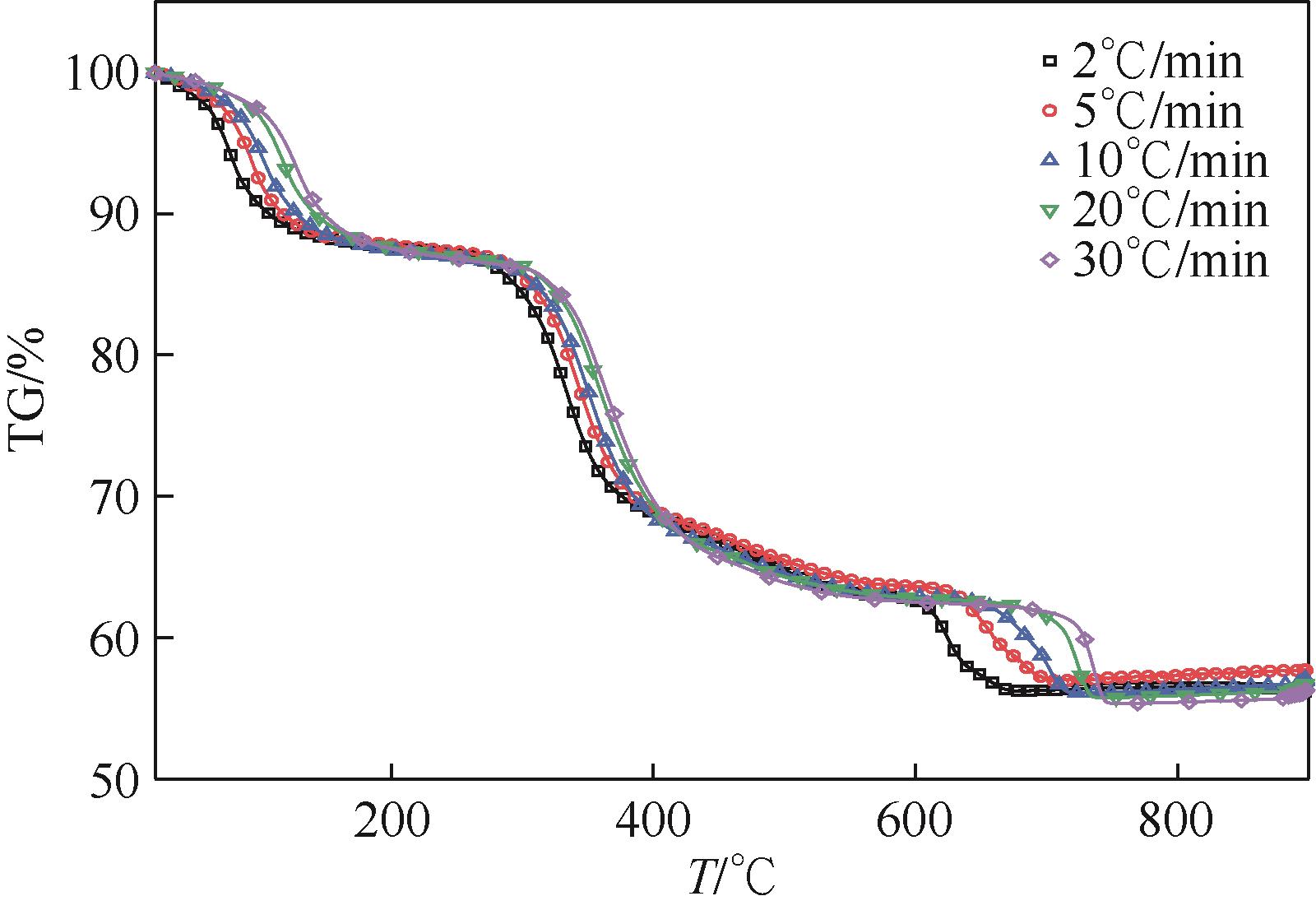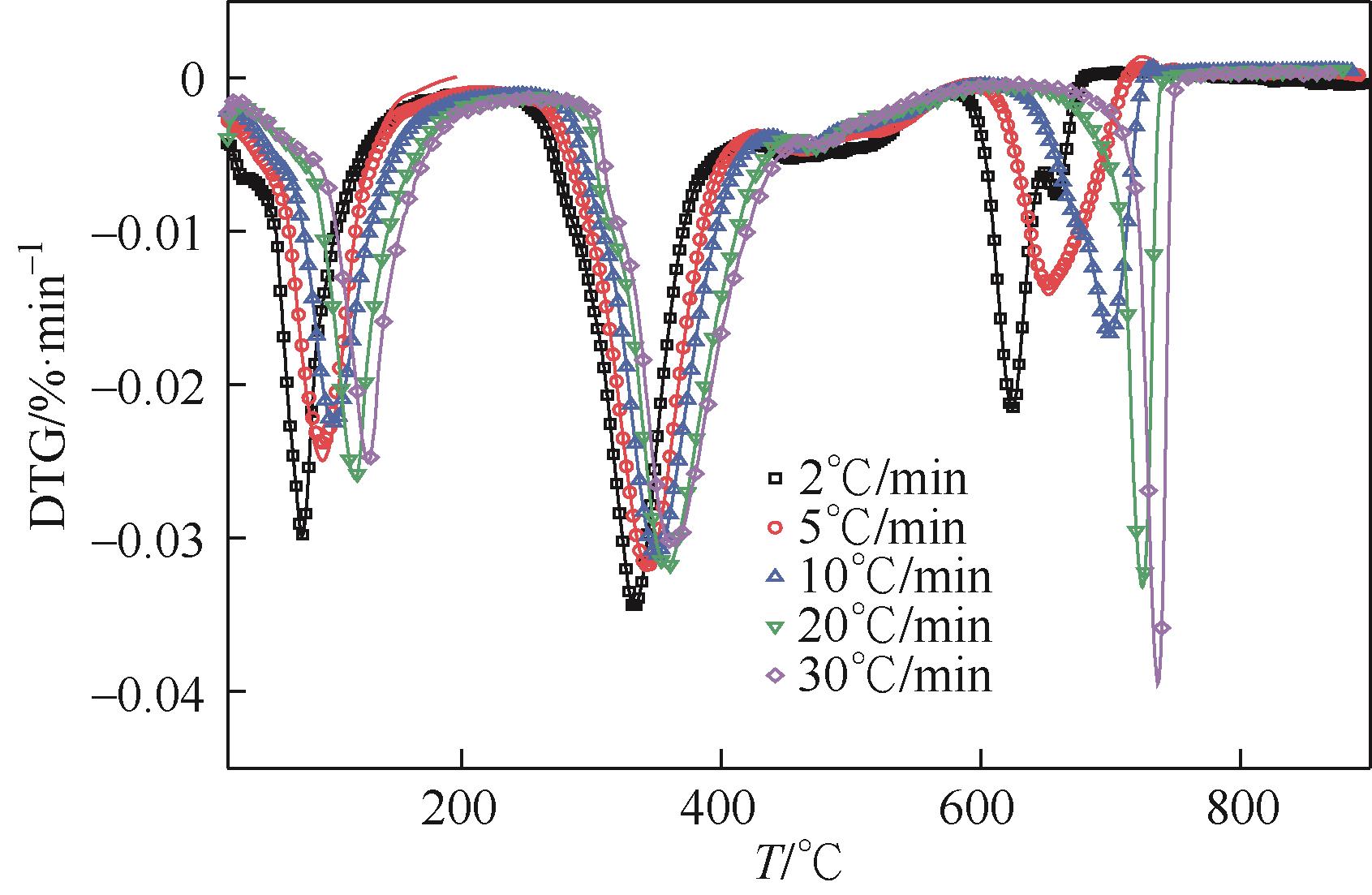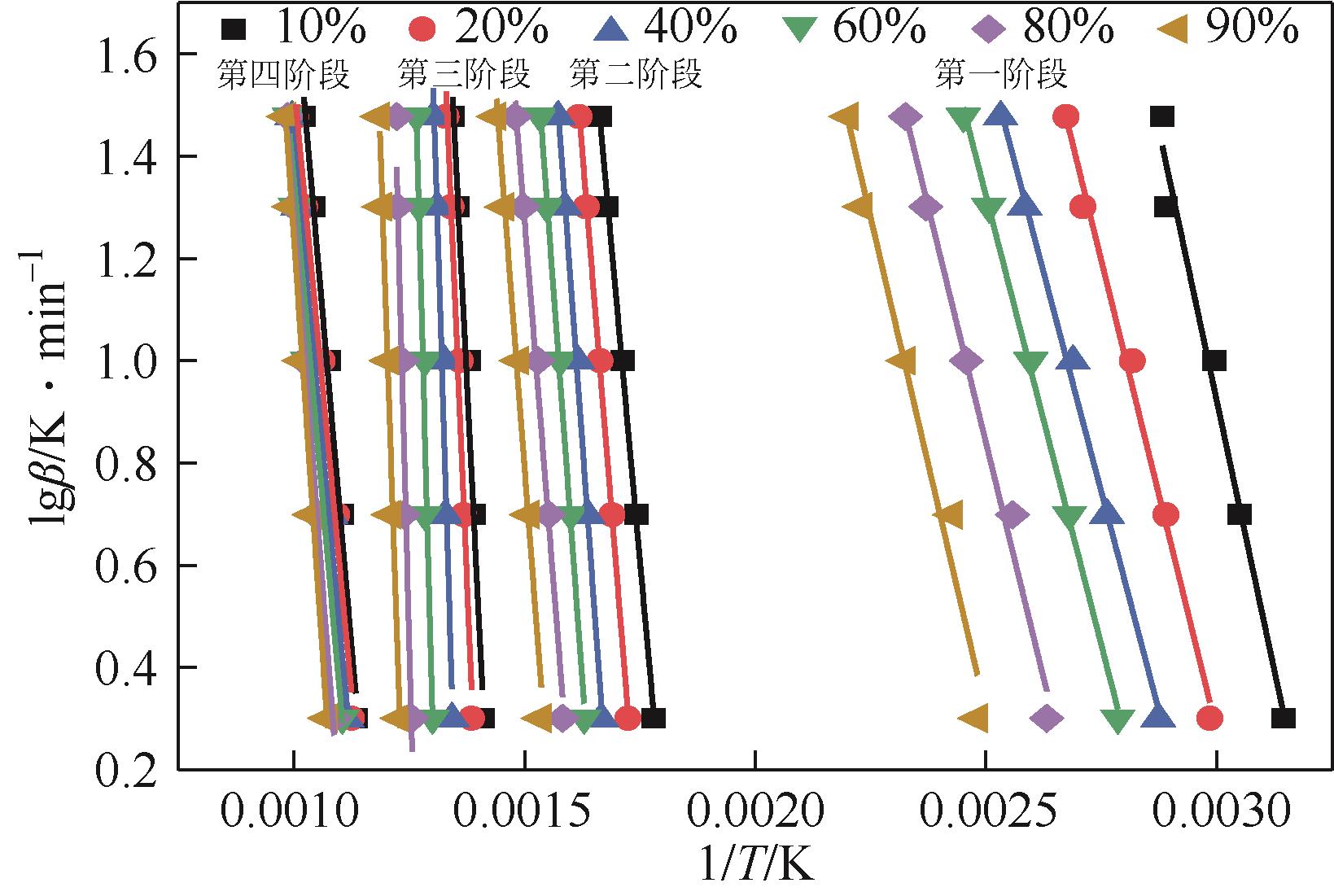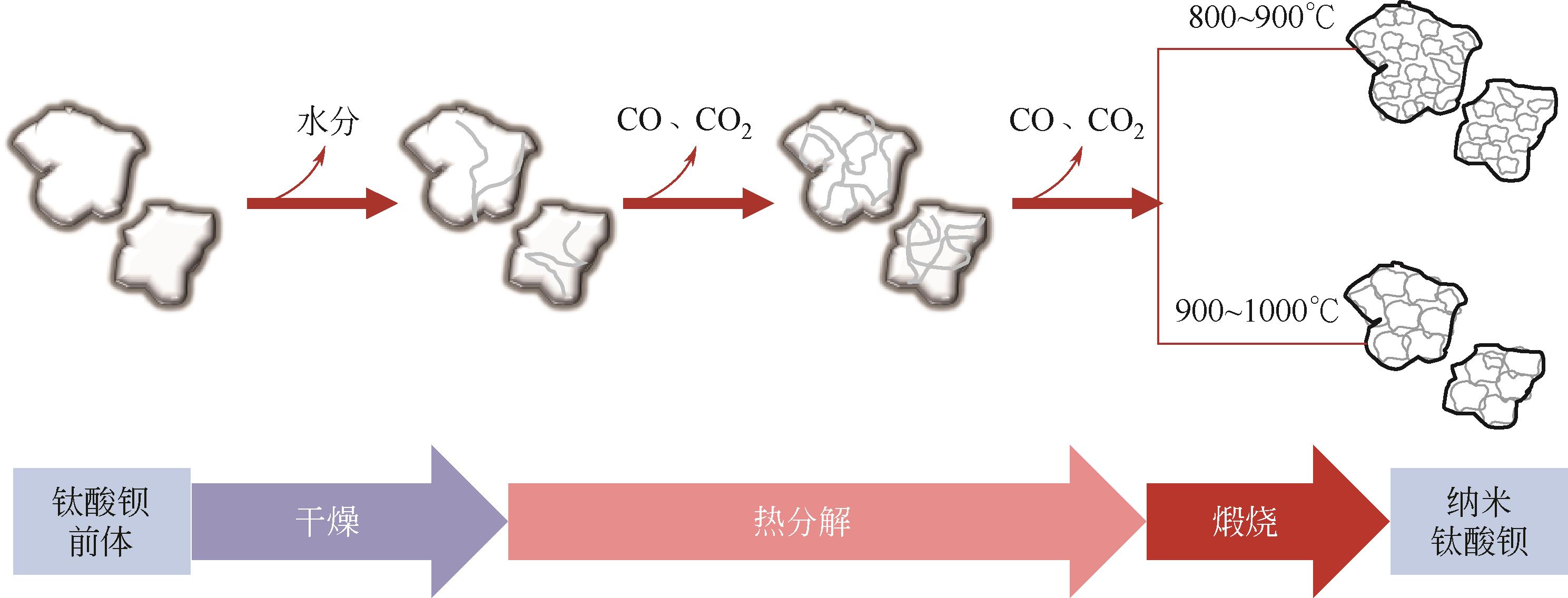| 1 |
上官明楠, 王超莹, 赵昀云, 等. 四方相纳米钛酸钡粉体的制备及性能研究[J]. 绝缘材料, 2024, 57(2): 53-59.
|
|
SHANGGUAN Mingnan, WANG Chaoying, ZHAO Yunyun, et al. Study on preparation and properties of tetragonal phase nano-barium titanate powder[J]. Insulating Materials, 2024, 57(2): 53-59.
|
| 2 |
赵虔诚. 抗还原型钛酸钡基储能陶瓷材料的研究[D]. 北京: 清华大学, 2018.
|
|
ZHAO Qiancheng. Study on non-reducible Barium titanate based energy-storage ceramics[D]. Beijing: Tsinghua University, 2018.
|
| 3 |
VINCENZO Buscaglia, RANDALL CLIVE A. Size and scaling effects in Barium titanate. An overview[J]. Journal of the European Ceramic Society, 2020, 40(11): 3744-3758.
|
| 4 |
李雪梅. 固相法制备亚微米钛酸钡粉体的研究[D]. 重庆: 重庆理工大学, 2023.
|
|
LI Xuemei. Study on preparation of submicron Barium titanate powder by solid state method[D]. Chongqing: Chongqing University of Technology, 2023.
|
| 5 |
周斌. 抗还原型钛酸钡基材料的制备与性能研究[D]. 南昌: 南昌大学, 2023.
|
|
ZHOU Bin. Research on preparation and properties of non-reducible Barium titanate-based materials[D]. Nanchang: Nanchang University, 2023.
|
| 6 |
PANOMSUWAN Gasidit, MANUSPIYA Hathaikarn. Correlation between size and phase structure of crystalline BaTiO3 particles synthesized by sol-gel method[J]. Materials Research Express, 2019, 6(6): 065062.
|
| 7 |
白罗. 水热合成四方相钛酸钡粉体及其形貌调控与分散性研究[D]. 武汉: 武汉理工大学, 2022.
|
|
BAI Luo. Study on morphology regulation and dispersion of tetragonal phase Barium titanate powder by hydrothermal synthesis[D]. Wuhan: Wuhan University of Technology, 2022.
|
| 8 |
邵志鹏, 江伟辉, 冯果, 等. 沉淀法和NHSG法制备钛酸钡纳米粉体的对比研究[J]. 陶瓷学报, 2016, 37(1): 44-48.
|
|
SHAO Zhipeng, JIANG Weihui, FENG Guo, et al. Comparative study on the preparation of BatiO3 nano powder via precipitation method and NHSG method[J]. Journal of Ceramics, 2016, 37(1): 44-48.
|
| 9 |
徐阳, 包莹. 化学沉淀法制备微细粉体钛酸钡的研究[J]. 兰州工业学院学报, 2017, 24(6): 86-89.
|
|
XU Yang, BAO Ying. Preparation of ultrafine Barium titanate by chemical precipitation method[J]. Journal of Lanzhou Institute of Technology, 2017, 24(6): 86-89.
|
| 10 |
CHEN Huei-Jyh, CHEN Yuwen. Hydrothermal synthesis of Barium titanate[J]. Industrial & Engineering Chemistry Research, 2003, 42(3): 473-483.
|
| 11 |
Sung-Soo RYU, YOON Dang-Hyok. Solid-state synthesis of nano-sized BaTiO3 powder with high tetragonality[J]. Journal of Materials Science, 2007, 42(17): 7093-7099.
|
| 12 |
杨雅文. 溶胶-凝胶法制备钛酸钡纳米粉体[J]. 山西化工, 2024, 44(1): 42-43, 46.
|
|
YANG Yawen. Preparation of Barium titanate nanoparticles by sol-gel method[J]. Shanxi Chemical Industry, 2024, 44(1): 42-43, 46.
|
| 13 |
陈杰, 张晴, 车明超. 微波辅助草酸盐沉淀法制备四方相钛酸钡纳米粉体[J]. 人工晶体学报, 2017, 46(8): 1545-1551.
|
|
CHEN Jie, ZHANG Qing, CHE Mingchao. Preparation of tetragonal Barium titanate nanopowders by oxalate co-precipitation assisted with microwave method[J]. Journal of Synthetic Crystals, 2017, 46(8): 1545-1551.
|
| 14 |
FRIEDMAN Henry L. Kinetics of thermal degradation of char-forming plastics from thermogravimetry. Application to a phenolic plastic[J]. Journal of Polymer Science Part C: Polymer Symposia, 1964, 6(1): 183-195.
|
| 15 |
SINGH Sanjay, PATIL Trilok, TEKADE Shyam P, et al. Studies on individual pyrolysis and co-pyrolysis of corn cob and polyethylene: Thermal degradation behavior, possible synergism, kinetics, and thermodynamic analysis[J]. Science of the Total Environment, 2021, 783: 147004.
|
| 16 |
HU Jinghui, GONG Li, HE Jiyu, et al. Studies on multistep thermal decomposition behavior of polytriazole polyethylene oxide-tetrahydrofuran elastomer[J]. Polymers for Advanced Technologies, 2020, 31(4): 749-758.
|
| 17 |
VENKATESH M, RAVI P, TEWARI Surya P. Isoconversional kinetic analysis of decomposition of nitroimidazoles: Friedman method vs. Flynn-Wall-Ozawa method[J]. The Journal of Physical Chemistry A, 2013, 117(40): 10162-10169.
|
| 18 |
SINDHU N V, MURALEEDHARAN K. Kinetic study of the multistep thermal behaviour of Barium titanyl oxalate prepared via chemical precipitation method[J]. Journal of Thermal Analysis and Calorimetry, 2019, 136(3): 1295-1306.
|
| 19 |
XU Jianfei, TSUTAI Sakae, HAYASHI Shigeo, et al. Thermal decomposition process of Barium titanyl oxalate tetrahydrate[J]. Journal of the Ceramic Society of Japan, 1999, 107(1241): 27-30.
|
| 20 |
李改改, 姜鹏飞, 黄佳齐, 等. 富油煤热解过程动力学参数变化规律研究[J]. 煤炭技术, 2023, 42(10): 52-56.
|
|
LI Gaigai, JIANG Pengfei, HUANG Jiaqi, et al. Study on change of kinetic parameters of tar-rich coal during pyrolysis[J]. Coal Technology, 2023, 42(10): 52-56.
|
| 21 |
刘晓林, 高礼杰, 付极文, 等. 热处理过程对纳米钛酸钡相变的影响研究[J]. 北京化工大学学报(自然科学版), 2004, 31(6): 13-17.
|
|
LIU Xiaolin, GAO Lijie, FU Jiwen, et al. Effect of heat treatment on phase transition of Barium titanate[J]. Journal of Beijing University of Chemical Technology, 2004, 31(6): 13-17.
|








